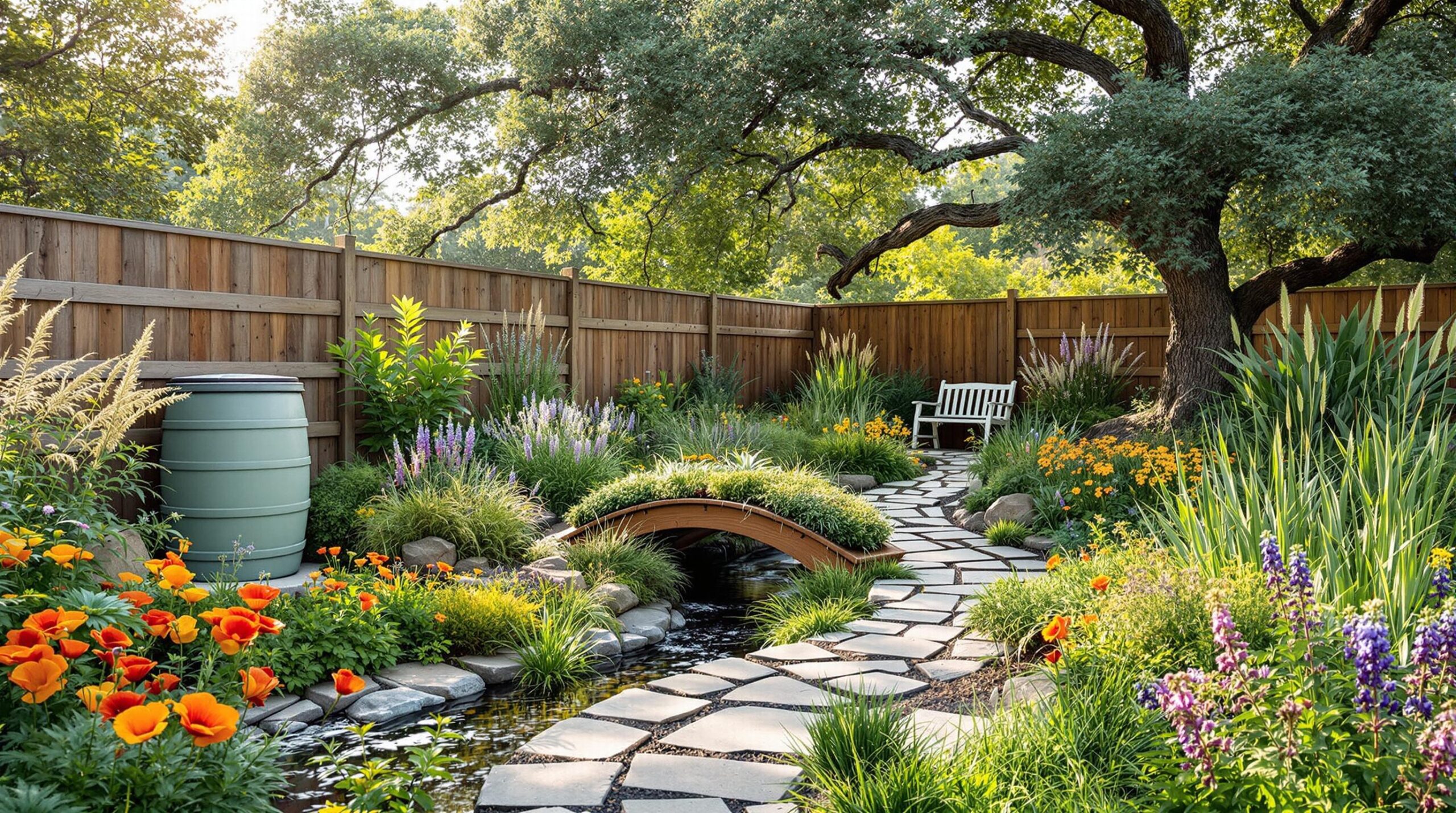As more individuals recognize the urgent need for environmental stewardship, sustainable landscaping has emerged as a compelling approach to designing gardens that are both gorgeous and beneficial to the ecosystem. By emphasizing native plants, water conservation, and reduced chemical use, homeowners can create green spaces that thrive naturally while supporting local wildlife and enhancing property value.
In this article, we will explore a range of eco-friendly practices that can transform your outdoor space into a sustainable haven, minimizing your environmental impact and fostering biodiversity.
Why choose sustainable landscaping?
Embracing sustainable landscaping not only contributes to the wellbeing of the planet but also offers practical benefits:
- Improved soil health and cleaner water quality
- Support local pollinators and wildlife habitats
- Reduction in water consumption and maintenance costs
- Potential increase in property values

Choosing native plants for your landscape
Native plants are a critical component of sustainable gardens. These species are naturally adapted to the local environment and require significantly less water and care compared to non-native varieties. By incorporating native flora, such as the reliable black-eyed Susan or the stunning purple coneflower, you contribute to a vibrant ecosystem that supports pollinators while enhancing the beauty of your garden.
Benefits of using native plants
| Feature | Native Plants | Non-Native Plants |
|---|---|---|
| Water Requirement | Up to 80% less | Higher watering needs |
| Pest Resistance | Natural resistance | Higher pest susceptibility |
| Soil Health | Improves soil structure | May degrade soil over time |
Designing a garden for wildlife: attracting biodiversity to your home
Implementing efficient irrigation systems
Effective water management is another hallmark of sustainable landscaping. By utilizing smart irrigation systems, you can drastically cut water usage while keeping your plants healthy. Technologies such as drip irrigation and weather-based controllers ensure that plants receive the right amount of water without waste.
- Drip Irrigation: Directly waters plant roots, saving up to 60% in water usage.
- Weather-Based Controllers: Adjust watering schedules based on real-time weather data.
- Soil Moisture Sensors: Monitor soil conditions to water only when necessary, improving efficiency by 20-40%
Creating habitats for wildlife
A thriving landscape should also invite local wildlife. By strategically planting flowers that bloom at different times, you can attract diverse pollinators throughout the growing season. Additionally, incorporating natural shelters, such as birdhouses and insect hotels, helps foster habitats for beneficial creatures.
- Use native flowering plants to provide nectar sources for bees and butterflies.
- Add water features like small ponds to support wildlife.
- Install birdhouses tailored to local species for shelter.
Minimizing chemical usage in your garden
Switching to organic fertilizers and integrating sustainable pest management techniques helps avoid harmful chemicals in your garden. By monitoring plant health regularly and employing natural remedies, you can maintain a healthy ecological balance.
- Utilize compost made from kitchen scraps and yard waste to enrich soil.
- Encourage beneficial insects like ladybugs to help control pests naturally.
- Opt for physical barriers or hand-picking pests rather than resorting to chemicals.
Organic composting tips
Composting not only enriches your soil but also simplifies waste reduction. Here’s a quick guide to starting your compost:
- Gather kitchen scraps like vegetable peels and coffee grounds.
- Add yard waste such as leaves and grass clippings.
- Store the mixture in a compost bin or pile, turning it regularly to aerate.
Incorporating permeable surfaces for water management
Choosing permeable materials for patios and pathways allows water to seep through, reducing runoff and replenishing groundwater. Options include pervious concrete, natural stone, and gravel. These eco-friendly surfaces are both functional and aesthetically pleasing.
| Type of Surface | Water Infiltration Rate | Benefits |
|---|---|---|
| Pervious Concrete | 3-8 gallons/minute/sq ft | Reduces runoff, prevents flooding |
| Porous Asphalt | Similar to pervious concrete | Traditional appearance, good infiltration |
| Gravel | 70% void space | Easy installation, highly permeable |
Setting up rainwater harvesting systems
Harvesting rainwater can significantly decrease your water expenses while providing a free, chemical-free irrigation source for your garden. Simple systems, such as rain barrels, can collect thousands of gallons of water from rooftops during rainy seasons.
- Place rain barrels under downspouts for maximum collection.
- Install fine mesh screens to filter debris and prevent pests.
- Connect multiple barrels for additional storage capacity.
Eco-friendly outdoor lighting solutions
Illuminating your outdoor space doesn’t have to be energy-intensive. Solar-powered lights and LED fixtures offer sustainable lighting options that reduce electricity use and enhance the ambience of your garden.
- Solar Lights: Charge during the day; provide light at night without additional costs.
- LED Fixtures: Consuming significantly less energy, they have a longer lifespan than traditional bulbs.
Frequently Asked Questions
What is sustainable landscaping?
Sustainable landscaping is the practice of creating outdoor spaces that are in harmony with the natural environment, focusing on native plants, water conservation, and organic maintenance to support wildlife and improve ecological health.
Why are native plants important?
Native plants typically require less water, have natural pest resistance, and contribute to better soil and air quality, all of which help sustain local ecosystems.
How can I reduce water usage in my garden?
Utilizing drip irrigation, installing soil moisture sensors, and incorporating drought-tolerant native plants greatly minimize water consumption while maintaining a healthy landscape.
How do I attract wildlife to my garden?
Planting native flowering species, providing water sources, and building shelters have proven effective in creating a welcoming habitat for beneficial insects and birds.
What is rainwater harvesting, and how can it benefit my garden?
Rainwater harvesting involves collecting and storing rainwater for irrigation, reducing reliance on municipal water supplies and helping to manage stormwater runoff effectively.
















